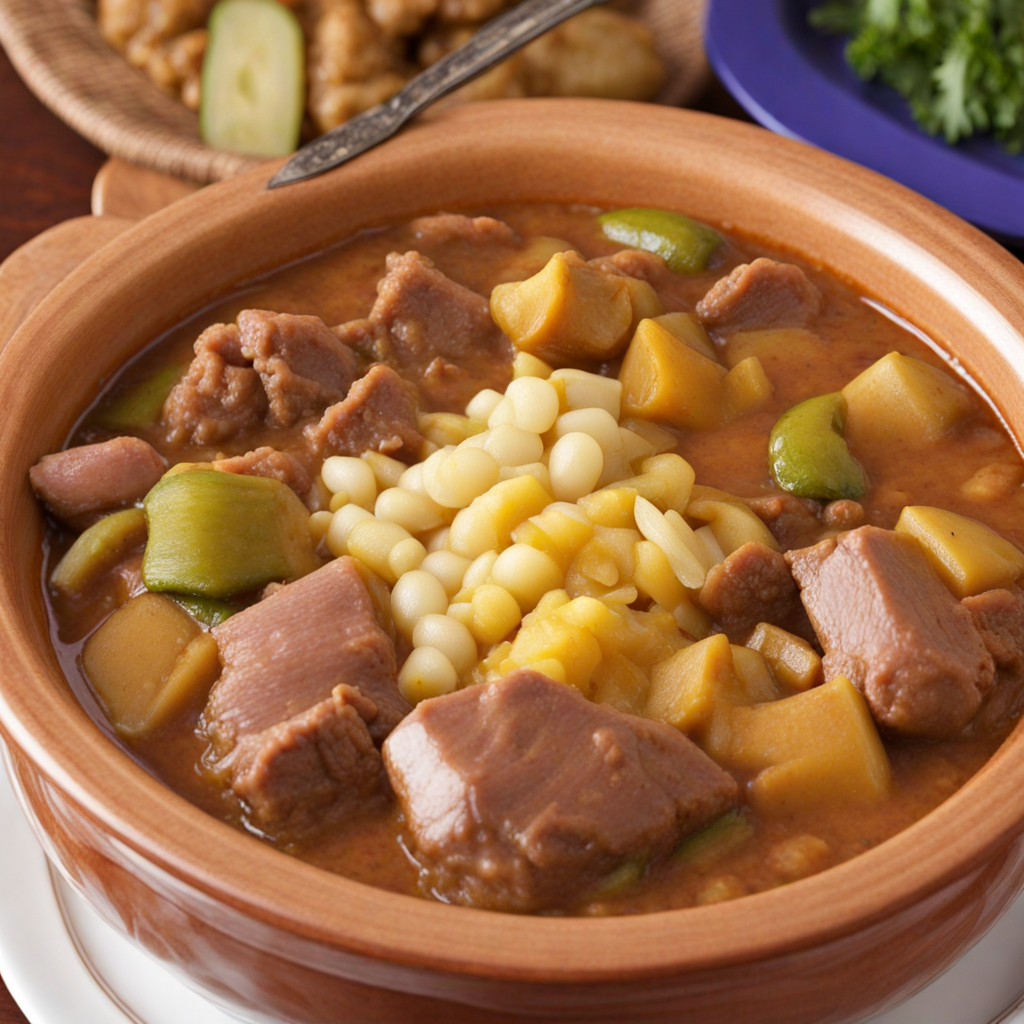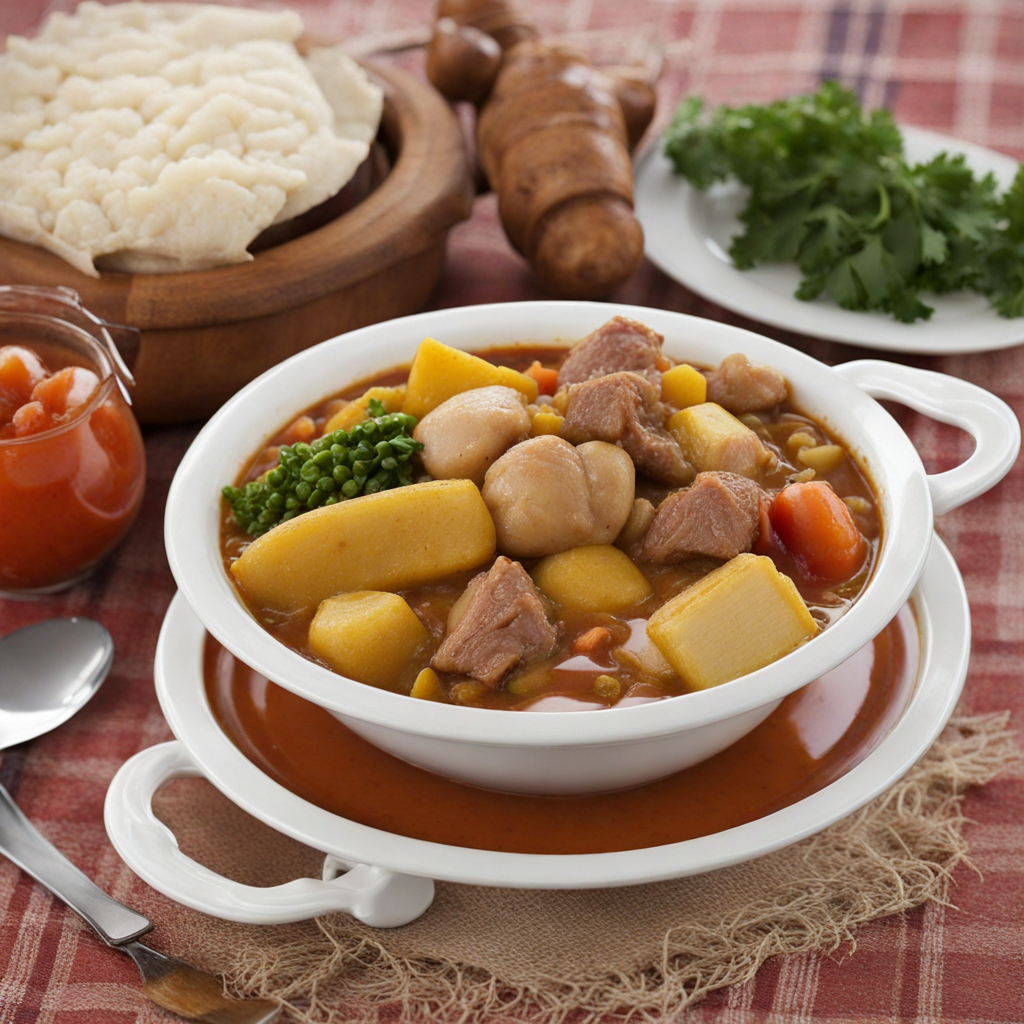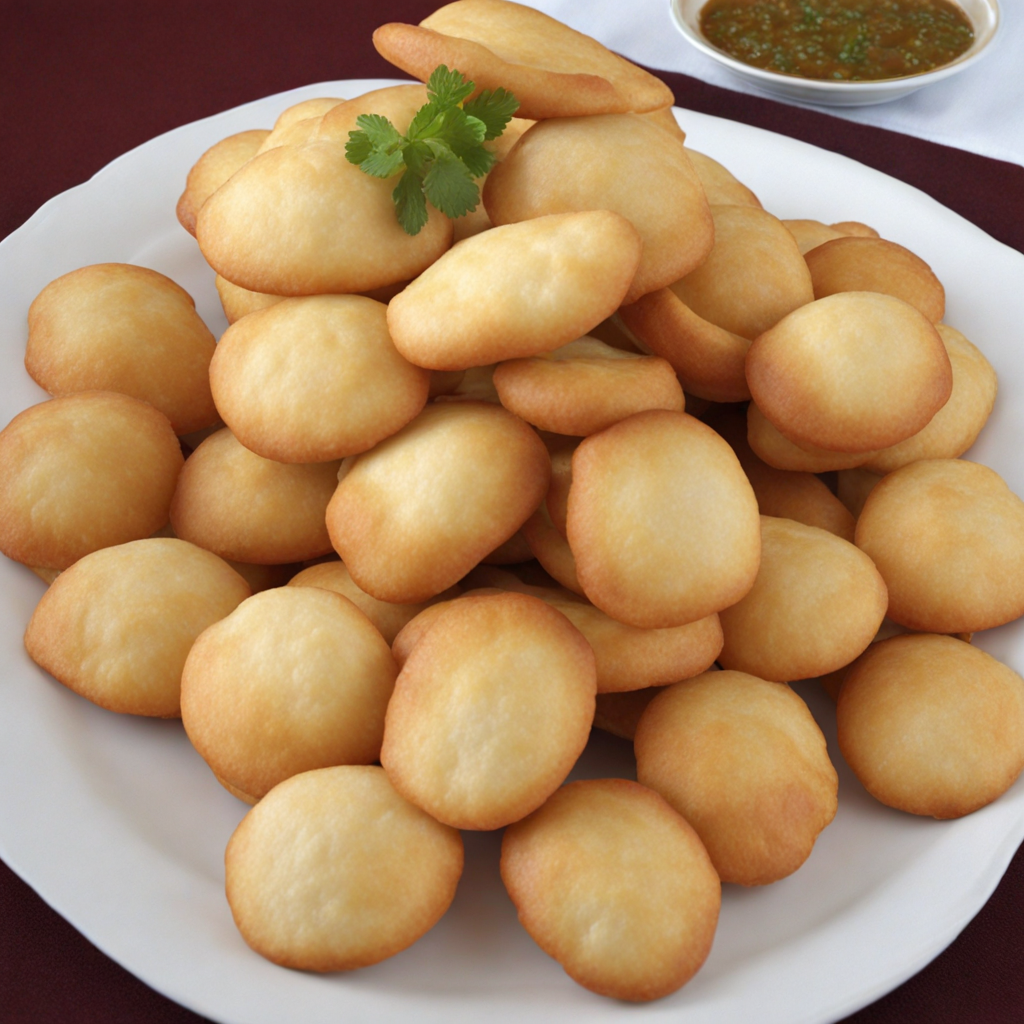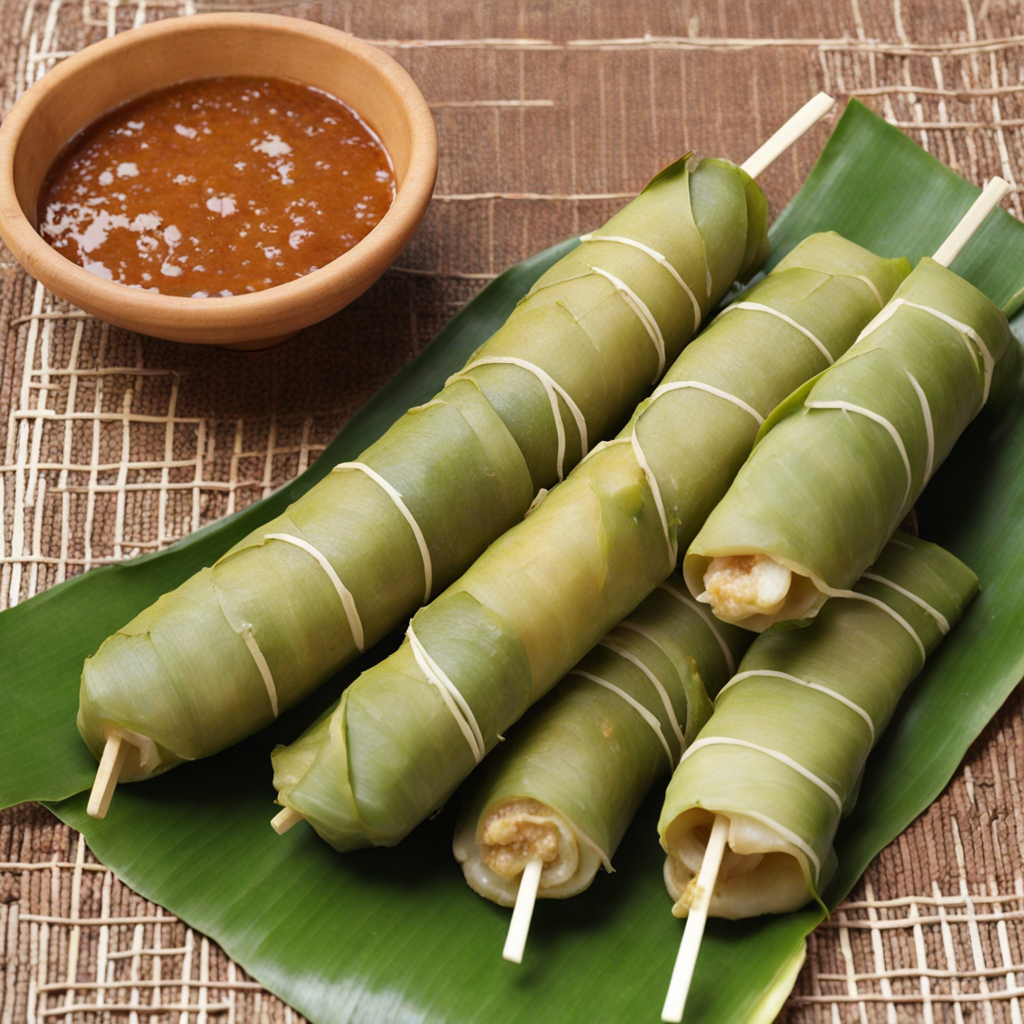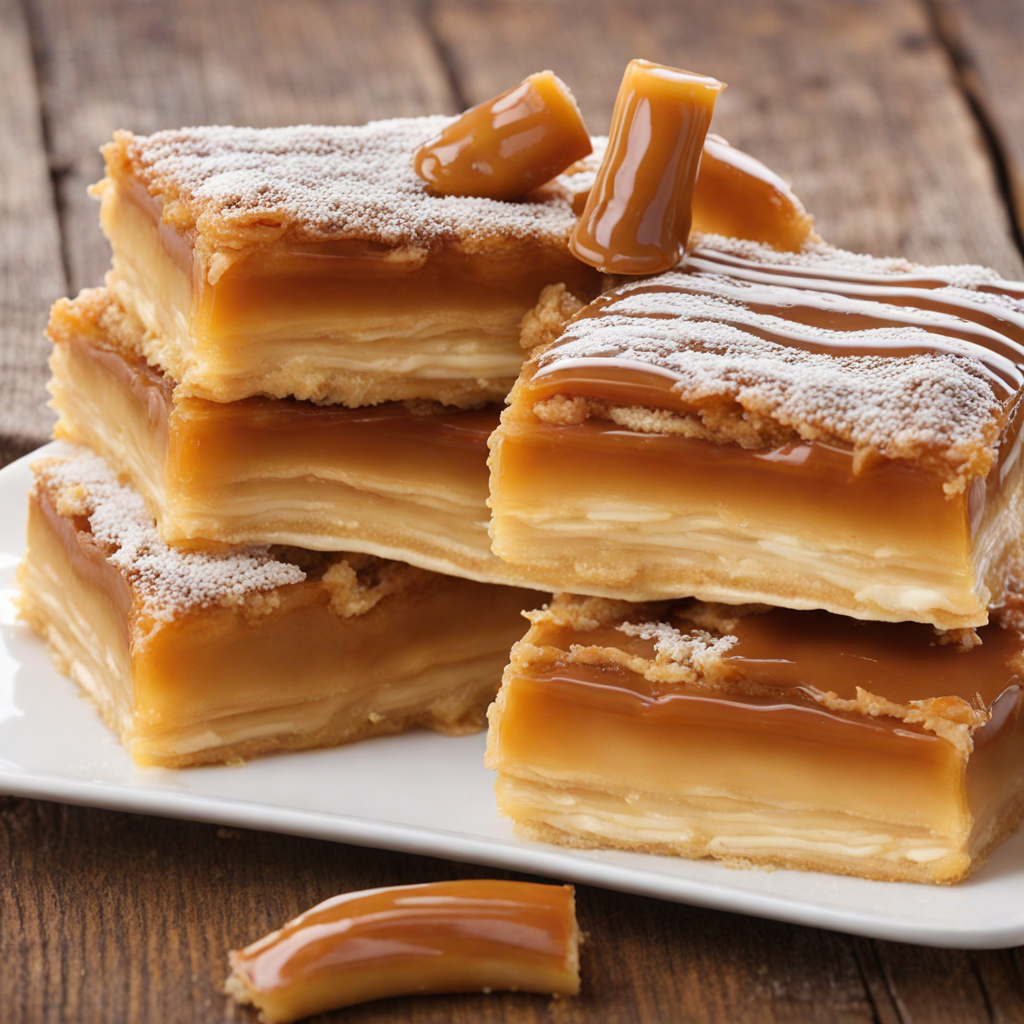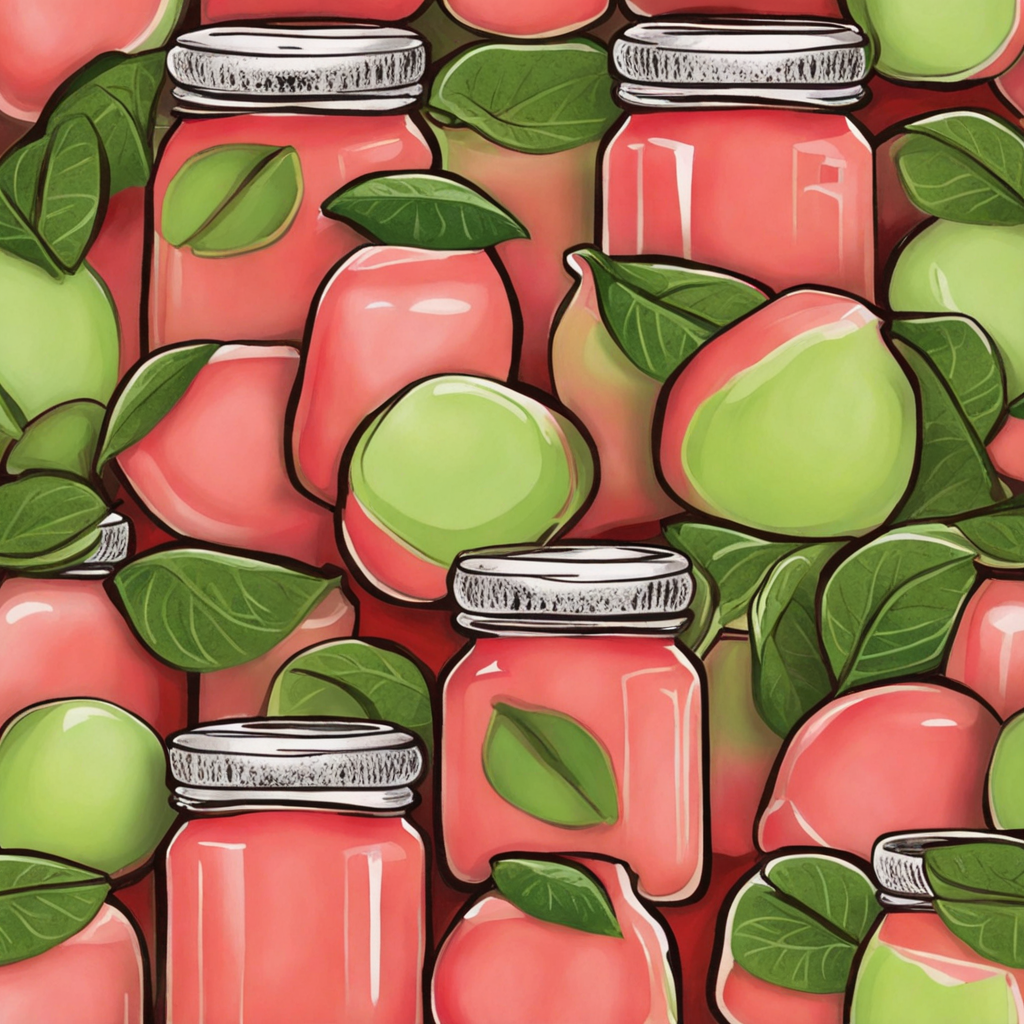Puchero
Puchero is a hearty and comforting traditional dish from Paraguay, embodying a rich tapestry of flavors and textures that reflect the country’s diverse culinary heritage. Typically prepared as a stew, Puchero is a blend of various meats, including beef, pork, and chicken, simmered slowly with an array of fresh vegetables such as potatoes, carrots, and corn. The long cooking process allows the flavors to meld beautifully, resulting in a savory and aromatic broth that is both nourishing and satisfying. The use of local herbs and spices enhances the dish, giving it a distinct Paraguayan flair that tantalizes the palate. One of the unique aspects of Puchero is its versatility; the ingredients can vary based on regional preferences and seasonal availability. Some versions may include sausages or other cuts of meat, while others might incorporate beans or squash, making each rendition of Puchero a reflection of the cook's creativity and the local bounty. The dish is often served with a side of rice or accompanied by a tangy sauce, adding an extra dimension of flavor. This adaptability makes Puchero a favorite among families, often served during gatherings or special occasions. Puchero is not just a meal; it is a cultural experience that brings people together. As you savor each spoonful, you’ll find the tender meat falling off the bone, the rich broth warming your soul, and the vibrant vegetables bursting with freshness. This dish invites you to explore the heart of Paraguayan cuisine, showcasing the country’s agricultural richness and culinary traditions. With its comforting nature and the communal spirit it embodies, Puchero is a must-try for anyone looking to discover a new and authentic taste of Paraguay.
How It Became This Dish
Puchero: A Culinary Journey Through Paraguay’s Heart and Heritage Puchero is a traditional dish that embodies the spirit of Paraguay, reflecting not only the country's agricultural bounty but also its rich cultural tapestry. This hearty stew, typically made with a variety of meats, vegetables, and sometimes legumes, is emblematic of Paraguayan home cooking and has evolved over centuries to become a staple in Paraguayan cuisine. #### Origins of Puchero The roots of Puchero can be traced back to the influence of various cultures that have shaped Paraguay throughout its history. Indigenous peoples, such as the Guarani, were the first to inhabit the region, and their agricultural practices laid the foundation for many of the ingredients still used in Puchero today. The Guarani cultivated crops like corn, beans, and sweet potatoes, which remain essential components of Paraguayan cuisine. Following the arrival of Spanish colonizers in the 16th century, European culinary traditions began to intermingle with Indigenous practices. The Spanish brought with them a variety of livestock, including cattle and pigs, which would eventually find their way into Puchero. The dish itself is thought to have been influenced by the Spanish “puchero,” a term that originally referred to a stew made with meat and vegetables, commonly found in various Latin American countries. #### Cultural Significance Puchero is more than just a meal; it is a symbol of family, community, and tradition in Paraguayan culture. Often prepared for large gatherings, it serves as a centerpiece for family reunions and celebrations. The act of cooking Puchero is a communal endeavor, with family members coming together to chop vegetables, season the meat, and share stories around the kitchen. The dish's significance is further highlighted during special occasions and public holidays. For instance, on Paraguay’s national day, many families prepare Puchero as a way to honor their cultural heritage. It’s a meal that promotes sharing and togetherness, values deeply ingrained in Paraguayan society. #### The Evolution of Puchero Over the years, Puchero has evolved, adapting to the changing landscape of Paraguayan society and the availability of ingredients. Traditionally, the stew consists of a mix of meats such as beef, pork, and chicken, simmered slowly with an array of vegetables that may include potatoes, carrots, squash, and corn on the cob. The choice of ingredients can vary by region and family tradition, leading to a multitude of variations. In rural areas, where self-sufficiency is key, Puchero often reflects what is available in local gardens and farms. Farmers may incorporate seasonal vegetables and legumes, which not only enhances the flavor but also makes the dish a reflection of the local ecosystem. This practice of using local produce aligns with Paraguay's agricultural heritage, where subsistence farming remains a vital part of life. As urbanization increased in the late 20th century, the way Puchero was prepared and consumed began to change. While still a beloved dish in the countryside, in cities, Puchero has often been adapted to suit contemporary lifestyles. Pre-prepared ingredients and faster cooking methods have made it more accessible to busy families, allowing for a quicker version of this traditional stew. #### Modern Interpretations and Global Influence In recent years, Puchero has gained international recognition, thanks in part to the global interest in Latin American cuisine. Chefs and food enthusiasts are increasingly exploring traditional dishes, and Puchero has found its way onto menus in restaurants around the world. This exposure has led to a resurgence of interest in its authentic preparation methods, as well as creative interpretations that reflect both traditional Paraguayan flavors and global culinary trends. Some chefs have begun to play with the concept of Puchero, experimenting with fusion elements and modern techniques. While the essence of the dish remains, new variations might include international spices or unconventional meats, catering to diverse palates and dietary preferences. These modern interpretations serve to celebrate Puchero’s adaptability, showcasing its ability to transcend cultural boundaries while still honoring its roots. #### Puchero in Contemporary Society Today, Puchero continues to be a cherished dish within Paraguay, symbolizing resilience and cultural identity. It is commonly served in homes across the country, reminding people of their heritage and the importance of family bonds. The stew's communal nature encourages sharing, fostering connections within families and communities. Additionally, Puchero serves as a culinary ambassador for Paraguay. As the country seeks to promote its culture and gastronomy on the global stage, dishes like Puchero play a pivotal role in highlighting the unique flavors and traditions of Paraguayan cuisine. Food festivals, cultural events, and culinary exhibitions often feature Puchero, showcasing its significance as a national dish. #### Conclusion Puchero is more than just a meal; it is a narrative woven into the very fabric of Paraguayan life. Its origins reflect the convergence of Indigenous and European culinary traditions, while its evolution speaks to the adaptability and resilience of Paraguayan culture. As it continues to be prepared in kitchens across the country and beyond, Puchero remains a powerful symbol of identity, community, and heritage, inviting everyone to share in its rich history and flavors. Whether enjoyed in a rural home or a cosmopolitan restaurant, Puchero is a testament to the enduring spirit of Paraguay and its people.
You may like
Discover local flavors from Paraguay


